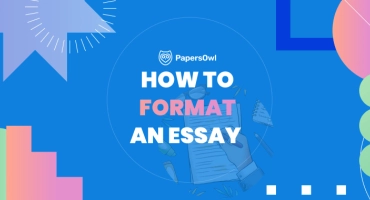How to Write Chicago Style Footnotes: Step by Step Guide
Table of contents
- 1 What Are Chicago Style Footnotes?
- 2 How to Format and Position Footnotes in Chicago Style?
- 3 Full Notes vs Short Notes in Chicago Formatting
- 4 How to Reference Different Sources in Chicago Style Footnotes?
- 5 Footnotes vs Endnotes in Chicago Style
- 6 7 Common Mistakes to Avoid
- 7 Chicago Footnotes Quick Reference Generator
- 8 Final Thoughts on Applying Footnotes Chicago Style
Learning how to write Chicago style footnotes is important for students, researchers, and writers in fields like history, literature, and political science. The Chicago Manual of Style is one of the most applied citation styles, particularly when writing formal research papers. Chicago footnotes help you reference sources, avoid plagiarism, and guide readers to your bibliography.
If you often work with long texts, page numbers, quotes, and several authors, using footnote citations is a must. This guide explains everything step by step with simple examples. Let’s get started on mastering this formatting style with confidence!
If the citation rules seem daunting, using an online assignment helper can simplify the process and ensure accuracy.

What Are Chicago Style Footnotes?
Footnotes in Chicago style are used to show where information in a paper comes from. Following the Chicago Manual of Style (CMS), these elements appear at the bottom of the same page where the source is mentioned. They are marked by a small superscript number that connects to a full note with all the publication details.
This format differs from other citation styles like MLA or APA, which use in-text citations with parentheses. In contrast, the Chicago style prescribes numbered footnotes, which keep the main text clear and uncluttered.
As a rule, we use Chicago style footnotes to quote or reference someone else’s work. They refer to your sources, don’t interrupt the flow, and lead to a full bibliography at the end.
How to Format and Position Footnotes in Chicago Style?
These are the detailed rules on basic formatting and placement of Chicago footnotes:
- Indicate a superscript number in the text after the quote or sentence mentioning a source.
- The number has to come after the punctuation mark (a period or quotation mark).
- The matching footnote should be placed at the bottom of the page.
- Add a blank line between the last line of text and the footnote.
- Use single spacing within the footnote and double spacing between footnotes.
- Use headline-style capitalization (capitalize important words).
- End each footnote with a period.
Henry James once wrote that “deep experience is never peaceful.”¹¹ Henry James, The Portrait of a Lady (Oxford University Press, 2008), 233.
This system helps readers find your sources and doesn’t break the flow of your writing. It’s especially useful in research papers, history essays, and literature studies. These basic principles describe the Chicago Manual of Style format, one of academic research’s most trusted citation styles.
Full Notes vs Short Notes in Chicago Formatting
In Chicago style footnotes, you use two kinds of citations: full notes and short notes. Both help credit your sources clearly.
Use a full note the first time you cite a source. It involves the author’s full name, title, publication details, and page number.
Henry James, The Turn of the Screw (New York: Oxford University Press, 2011), 25.
For later citations of the same source, use a short note. It includes only the author’s last name, a shortened title, and the page number.
James, Turn of the Screw, 31.
This type of Chicago footnote citation keeps your writing neat. If you cite the same source again right after, you can use “Ibid.”
Ibid., 34.
Some schools may ask for full notes every time or allow short notes only if you insert a full Chicago style bibliography. Always check what your teacher wants!
Use full and short notes to make your citations clear and honest.
How to Reference Different Sources in Chicago Style Footnotes?
When writing academic papers, you should use various types of sources. Chicago style footnotes help you cite them correctly. Give full details the first time, then use short forms. Below are step-by-step Chicago footnotes example entries for common sources.
📚 Book (Print and eBook)
Use the author’s full name, book title in italics, publication city, publisher, year, and page number.
John Smith, The Art of Writing Papers (Chicago: University of Chicago Press, 2021), 45.
Nam P. Suh, The Principles of Design (New York: Oxford University Press, 2020), Kindle edition, 102.
If you cite the same source again, use a shortened version:
Smith, The Art of Writing, 47.
📖 Chapter in an Edited Volume
List the chapter author, chapter title in quotation marks, book title in italics, editor’s name, publication info, and page range.
Rachel Adams, “Social Media Influence,” in Modern Communication Trends, ed. Tom Gray (Boston: Beacon Press, 2019), 123–35.
Adams, “Social Media Influence,” 129.
This is a common Сhicago style footnotes example for sources with multiple contributors.
📰 Journal Article (Print and Online with DOI)
For print journals, include the author’s name, article title in quotation marks, journal name in italics, volume number, issue number, year in parentheses, and page numbers.
Laura Dean, “Global Learning Patterns,” International Education Review 15, no. 2 (2020): 88–101.
Rita Padawangi, “Urban Development in Southeast Asia,” Urban Studies Journal 44, no. 4 (2021): 230–45, https://doi.org/10.1017/9781108669108.
Dean, “Global Learning Patterns,” 90.
This format is helpful for students learning how to write a paper in Chicago style for research-heavy assignments.
🌐 Website
For websites, include the author (if available), page title in quotation marks, website name in italics, publication or update date, and URL.
Emily Folk, “What the Future of Renewable Energy Looks Like,” Earth.Org, August 22, 2021, https://earth.org/the-growth-of-renewable-energy-what-does-the-future-hold/.
If there’s no author, begin with the article title.
Folk, “What the Future of Renewable Energy Looks Like.”
📺 Online Video (YouTube, etc.)
Include the uploader or organization, video title in quotation marks, video format, upload date, and URL.
James Shaw, “9 Steps to Ruling Social Media – Rachel Adams Lee,” YouTube video, January 3, 2024, https://www.youtube.com/watch?v=DAskZDxyky0.
James Shaw, “9 Steps to Ruling Social Media.”
💬 Social Media Post
According to the Сhicago Manual of Style footnotes requirements, include the author or account name, full post (up to 160 characters), platform, date, and URL.
BBC News (@BBCNews), “Nasa has released a picture of a rainbow in space,” Instagram, May 23, 2025, https://www.instagram.com/p/DJ5CZaIhcn3/.
BBC News, “NASA has released a picture of a rainbow in space.”
👥 Multiple Authors or Corporate Authors
For books with more than three authors, use only the first author’s name followed by “et al.” For corporate authors (organizations), list the organization as the author.
Kevin Moore et al., Exploring World Cultures (New York: Harper Academic, 2018), 77.
World Health Organization, Global Health Report 2022 (Geneva: WHO, 2022), 65.
Moore et al., Exploring World Cultures, 80.
World Health Organization, Global Health Report, 67.
Footnotes vs Endnotes in Chicago Style
You can use footnotes or endnotes to cite sources. Footnotes go at the bottom of the page. Endnotes appear at the end of a chapter or paper. Footnotes work well for fast source checking. Due to endnotes, the pages look cleaner. Ask your teacher which to use. Here’s a quick comparison:
| Feature | Footnotes | Endnotes |
| Location | Bottom of the same page | End of chapter or paper |
| Ease of use | Easy to find while reading | Less distracting, cleaner pages |
| Common use | Often used in the humanities | Sometimes preferred in longer works |
| Formatting | Superscript numbers in text | Superscript numbers in text |
| Reader experience | Quick reference | Reference at the end |
Use a footnote citation when you want to provide source information to the readers immediately. Use endnotes if you want a tidy page layout. Both follow the Chicago style format and insert full publication details in the note.
7 Common Mistakes to Avoid
❌ Forgetting to insert page numbers.
❌ Using in-text citations when you should add footnotes.
❌ Placing footnotes before the punctuation mark.
❌ Forgetting to use a shortened citation after the first use.
❌ Mixing styles.
❌ Leaving out full publication information.
❌ Using a block quotation without a citation.
Chicago Footnotes Quick Reference Generator
Need fast help? Use our free Chicago citation generator. This tool creates sample citations quickly. How does it work?
- Enter the title, author, or ISBN.
- Add details like the publisher and date.
- Click “Generate Citation.”
You’ll get a correct Chicago-style citation in seconds.
Downloadable Chicago Style Footnotes PDF Template (Bonus)
Have trouble keeping track of all the rules for Chicago-style footnote citations? Download our free printable PDF guide — a helpful hand to keep by your side while writing.
📌 Shows how to format full notes and shortened notes;
📌 Covers citations for books, journal articles, websites, and more;
📌 Based on the 17th edition of the Chicago Manual of Style;
📌 Easy to print or use on your phone, tablet, or computer.
If you complete a research paper, essay, or thesis, this Chicago footnote citation PDF will help you stay clear, correct, and confident.
Final Thoughts on Applying Footnotes Chicago Style
Understanding how to write Chicago style footnotes takes time. Still, it’s a valuable skill. It improves your writing, builds credibility, and helps your readers follow your sources. If you write a book, article, or research paper, appropriate Chicago footnotes show that you care about accuracy and detail.
Use this guide as a reference when you’re stuck. Remember the particularities of citation styles, the difference between full notes and short notes, and always double-check your formatting. With practice, you’ll be confident in formatting great Chicago-style citations. Learning the basic principles of citations and formatting will allow you to grow as a strong and reputable academic writer.







